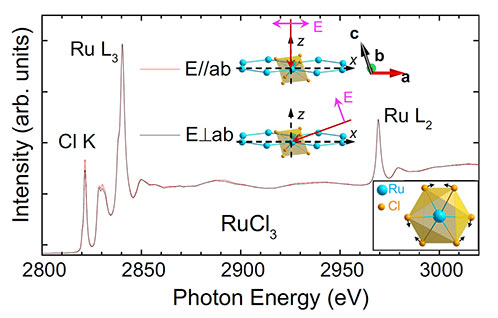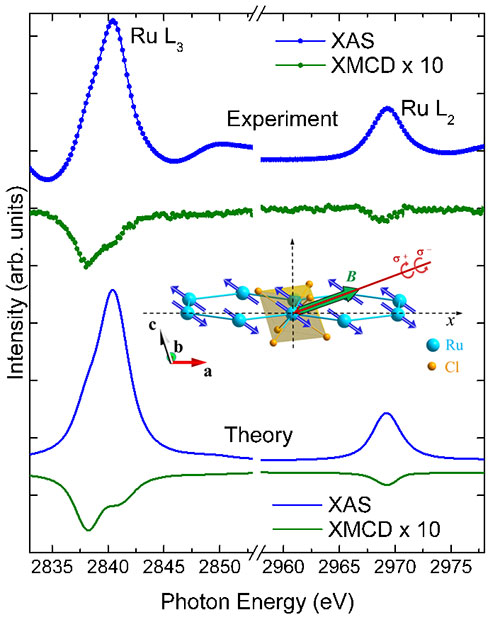Stefano Agrestini and co-workers from Hao Tjeng group at the Max Planck Institute for Chemical Physics of Solids, in Dresden (Germany), together with Professor Tanaka at Hiroshima University, Japan, have used ALBA and Taiwan synchrotron sources to demonstrate the "electronically cubic conditions"and the Jeff = 1/2 ground state for Ru in α-RuCl3, a pre-requisite for Kitaev Physics and the possibility for studying in this material Majorana fermion excitations. These fermions, predicted to exist by E. Majorana in 1937, are identical to their own antiparticles but despite being long- sought for 80 years a firm evidence of them is still missing.
α-RuCl3 is the most promising candidate for the long-sought materialization of the Kitaev model, where compass-like exchange interactions lead to a gapless spin liquid with emergent Majorana fermion excitations. Prerequisite for these expectations is that the symmetry-imposed noncubic crystal field is smaller compared to the spin-orbit coupling and does not perturb significantly the description of the electronic ground state in terms of the Jeff = 1/2 state. The authors combine polarization-dependent x-ray absorption spectroscopy, a technique that gives direct access to the crystal field of a material, and full multiplet atomic calculations to determine the size and sign of the noncubic crystal-field splitting. The results demonstrate that the "electronically cubic conditions" and the Jeff = 1/2 ground state for Ru in α-RuCl3 are fulfilled.
BOREAS beamline at ALBA was key to experimentally confirm the Jeff = 1/2 state ground state in combination with advanced full multiplet cluster calculations, by allowing to perform X-Ray Magnetic Circular Dichroism measurements at the Ru L3,2 thanks to its broad photon energy range extending onto the tender x-ray range (2-4 keV).
Stefano Agrestini will shortly joint ALBA experiments division and BOREAS beamline team, thanks to an agreement between Max Planck Institute for Chemical Physics of Solids in Dresden and the ALBA Synchrotron.

Fig 1: Ru L2,3 x-ray absorption spectra of a RuCl3 single crystal for incoming linear polarized light with the electric field vector E normal (black line) and parallel (red line) to the ab plane. Inset: Sketch of the trigonal distortion.

Fig 2: Experimental Ru L2,3 X-Ray Absorption (XAS, blue circles) and X-Ray Magnetic Circular Dichroism (XMCD, green circles) spectra of a RuCl3 single crystal together with calculated XAS (blue line) and XMCD (green line). The spectra were measured at T = 2 K and B = 6 T.




